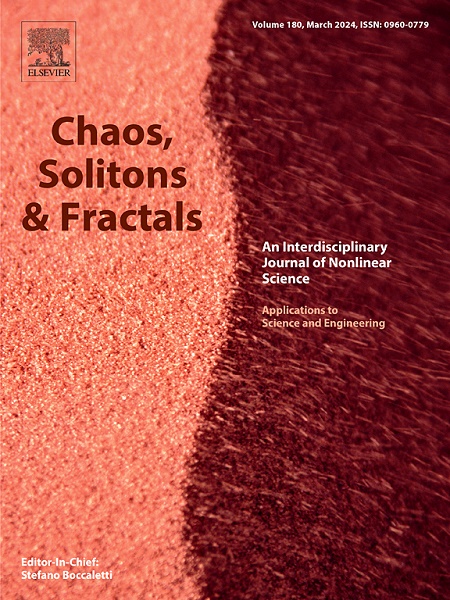基于空间调制非弹性双波混频的动态可控双色电致光栅
IF 5.3
1区 数学
Q1 MATHEMATICS, INTERDISCIPLINARY APPLICATIONS
引用次数: 0
摘要
提出了一种利用非弹性双波混频过程控制四能级倒y型冷原子系综中双色电磁感应光栅的方案。通过在辅助控制场后面增加强度掩模,将入射探测场的传输函数与产生的信号场进行周期性调制,从而形成TCEIG。利用实验可得的参数,可以将不同频率的探针场和信号场同时衍射成高阶衍射。研究发现,通过调整探针场和信号场的失谐,可以显著提高TCEIG的衍射效率,尤其是一阶衍射效率。此外,还证明了可以通过调节控制场的强度和失谐来控制TCEIG的衍射。最后,我们研究了相位失配对TCEIG衍射的影响。结果表明,在相位失配的情况下,探针场的衍射图具有较强的鲁棒性,而信号场的衍射强度受到相位失配的抑制。该方案为光开关的全光控制和波分复用提供了可能。本文章由计算机程序翻译,如有差异,请以英文原文为准。
Dynamically controllable two-color electromagnetically induced grating via spatially modulated inelastic two-wave mixing
A scheme for controlling two-color electromagnetically induced grating (TCEIG) in a coherently prepared cold atomic ensemble with a four-level inverted Y-type configuration is proposed via exploiting inelastic two-wave mixing process. By adding an intensity mask behind the auxiliary control field, the transmission functions of the incident probe field and the generated signal field are modulated periodically, thereby leading to the formation of TCEIG. Using experimentally achievable parameters, both the probe and signal fields with different frequencies can be simultaneously diffracted into high-order diffractions. It is found that the diffraction efficiencies of TCEIG, especially the first-order diffraction efficiency, can be significantly improved via adjusting the detunings of the probe and signal fields. Furthermore, it is also demonstrated that the diffraction of TCEIG can be manipulated via tuning the intensity and detuning of the control field. Finally, we investigate the influence the phase mismatch on the diffraction of TCEIG. It is shown that the diffraction pattern of the probe field is rather robust against the phase mismatch, while the diffraction intensities of the signal field are suppressed by the phase mismatch. Our scheme may provide a possibility for the all-optical control of optical switch and wavelength division multiplexing.
求助全文
通过发布文献求助,成功后即可免费获取论文全文。
去求助
来源期刊

Chaos Solitons & Fractals
物理-数学跨学科应用
CiteScore
13.20
自引率
10.30%
发文量
1087
审稿时长
9 months
期刊介绍:
Chaos, Solitons & Fractals strives to establish itself as a premier journal in the interdisciplinary realm of Nonlinear Science, Non-equilibrium, and Complex Phenomena. It welcomes submissions covering a broad spectrum of topics within this field, including dynamics, non-equilibrium processes in physics, chemistry, and geophysics, complex matter and networks, mathematical models, computational biology, applications to quantum and mesoscopic phenomena, fluctuations and random processes, self-organization, and social phenomena.
 求助内容:
求助内容: 应助结果提醒方式:
应助结果提醒方式:


